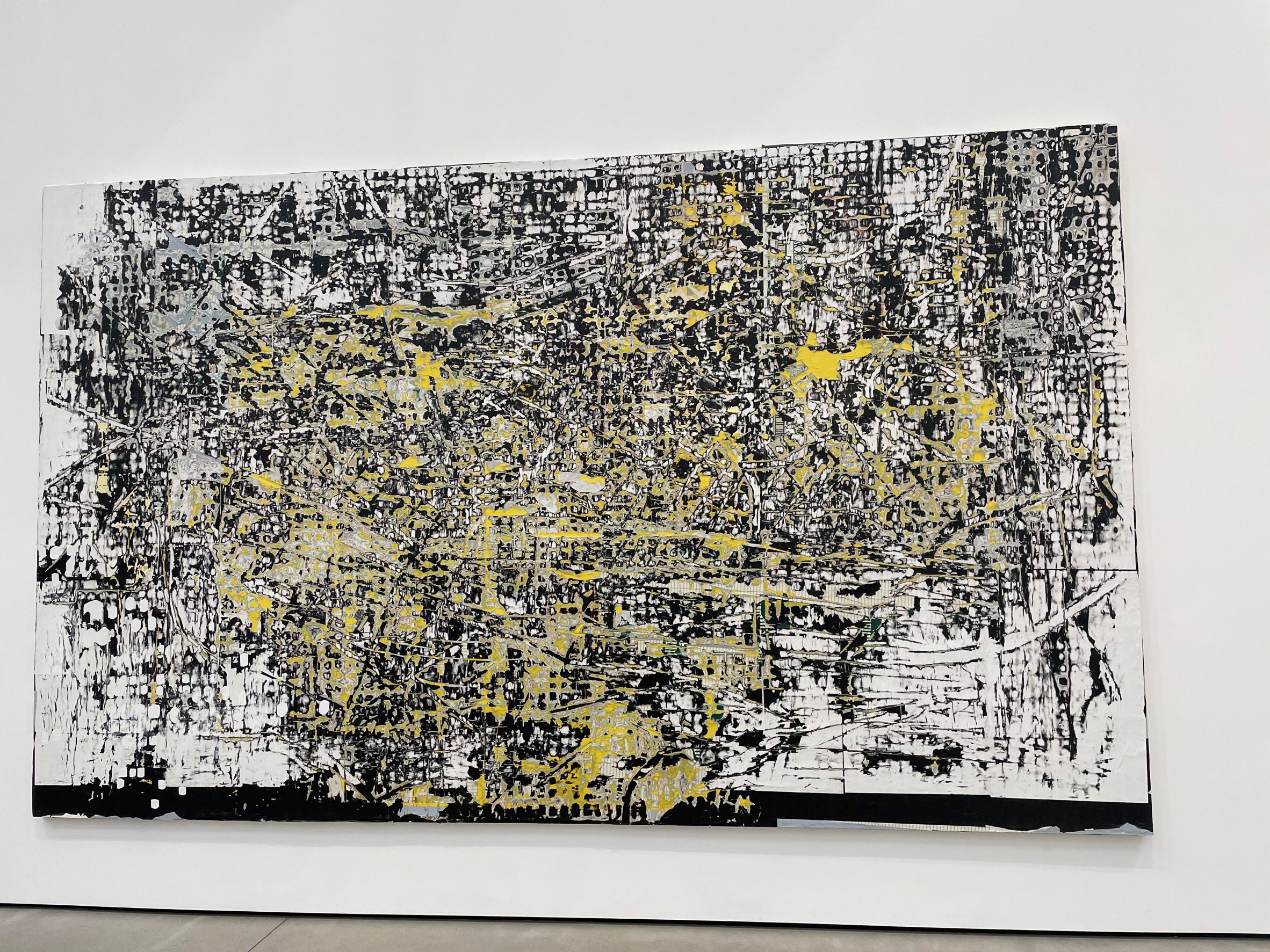Art Versus Technology
[I read this novel in contexts as varied as the points of view presented in the book: including Boston, Seaside, Florida, Los Angeles, Atlanta, and of course, Whidbey Island. The above image is a photo of a mixed media work by Mark Bradford taken at The Broad in Downtown Los Angeles.]
In this narrative Egan weaves multiple lives together in contemporary and future time. The intertwined stories reveal two paths for the future of humanity: one defined by technology and one by art. A central story to the narrative is the invention of Own Your Unconscious by Bix Bouton the founder of Mandala, which reads like a fictional version of the Metaverse with a twist of imagined future technology beyond social media. We see the results of this technology playing out over time from multiple points of view. Originally developed to address memory loss and dementia, it becomes ubiquitous in society to scan people’s brains into a Mandala cube and then upload them into the Collective Unconscious. This technology is purported to have solved many crimes, eradicated child pornography, and increased empathy worldwide, but at the same time there are many detractors who don’t want their lives to be surveilled by the world.
In this future reality, like our current reality, it feels true that the technology and its repercussions are not well understood. People simply act according to what meets their needs and desires in the moment such as downloading the consciousness of a loved one who is dying or uploading their memories to get access to the Collective Unconscious to look for a crush from their past. Alongside this miraculous technology we see a world with other forms of surveillance and mental controls operated by intelligence and the government in the form of weevils (brain implants that seem to both watch and control their hosts). We see the story of a citizen agent played out where a woman is used as a secret spy and then returned to her normal life full of trauma. Through these specific stories, Egan hints at a world where increased transparency comes at a cost of loss of privacy and autonomy and increased government control. She does not digress much into explaining the workings of the entire world, but allows elements of narrative delivered in the lives of characters we come to care about to become a patchwork of cautionary tales.
Egan’s writing really sings in the family setting as we see over a period of 30-40 years how the lives of parents, children, and siblings in multiple families play out. The star eldest over-achiever son becomes a successful doctor then gets addicted to prescription drugs and destroys his life, to eventually recover and take up politics. We encounter a handful of the characters in coming of age segments which stood to me as some of the most poignant scenes, pulling me through the narrative emotionally while behind the scenes Egan quietly stacks the chips of her heady messages. 
The question of art is raised later in the book in the form of the son of the inventor. He refuses from age 9 to ever participate in downloaded unconscious, though he is subjected to watching his father’s memories in a scene similar to a family movie night where Bix plays the memory of when he conceived of the vision for his invention. The family are sprawled on a bed or couch with headsets and it seems their Dad can control what parts of the memory to show and when emotions and thoughts are shared. This boy, Gregory, is a writer. He refuses his fathers money along with his technology and pursues his education as a writer independently. He comes to see the Collective Unconscious as a threat to fiction. Through him, Egan introduces the counter element to technology as art. In the end, Gregory experiences an epiphany where he can tap into the collective unconscious without machinery through an ecstatic, spiritual moment fueled in part by an old 60s strain of weed.
The multiple point of view approach to this book also creates a meta experience of collective unconscious. When Gregory taps into his ultimate realization what he imagines is the voices, feelings, and imprints of infinite human souls, while the book is limited to a dozen or so, reading it does feel like tapping into the inner voice of many unique souls.
My final take from Egan’s somehow both winding and riveting book is that art (particularly fiction) is a transcendent path to accessing the collective unconscious of all life. I appreciate the underlying assumption of this theme, that the collective unconscious exists and that further unity and accessibility of this reality is a goal for humanity. The flip side of the message is that taking technology driven shortcuts to reaching this state may have social rewards in the short term, but comes with potentially dire consequences.
Ultimately this work is a compelling rendering of what a revolutionary post-social media technology could mean in the world, deeply grounded in realism, and full of poignant insights into the human psyche. Three cheers for reading as an act of cultural evolution!
Follow on Twitter @BooksinContext, also on Medium @lisahanson.








